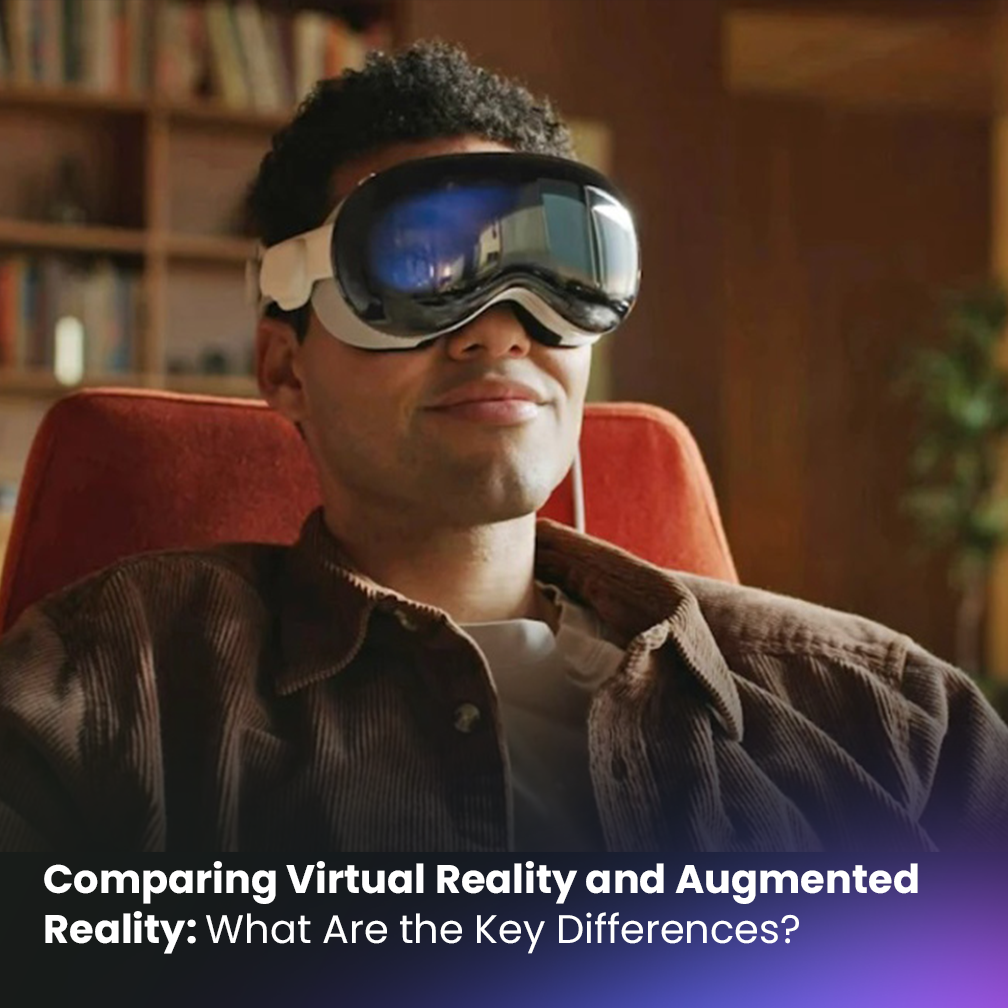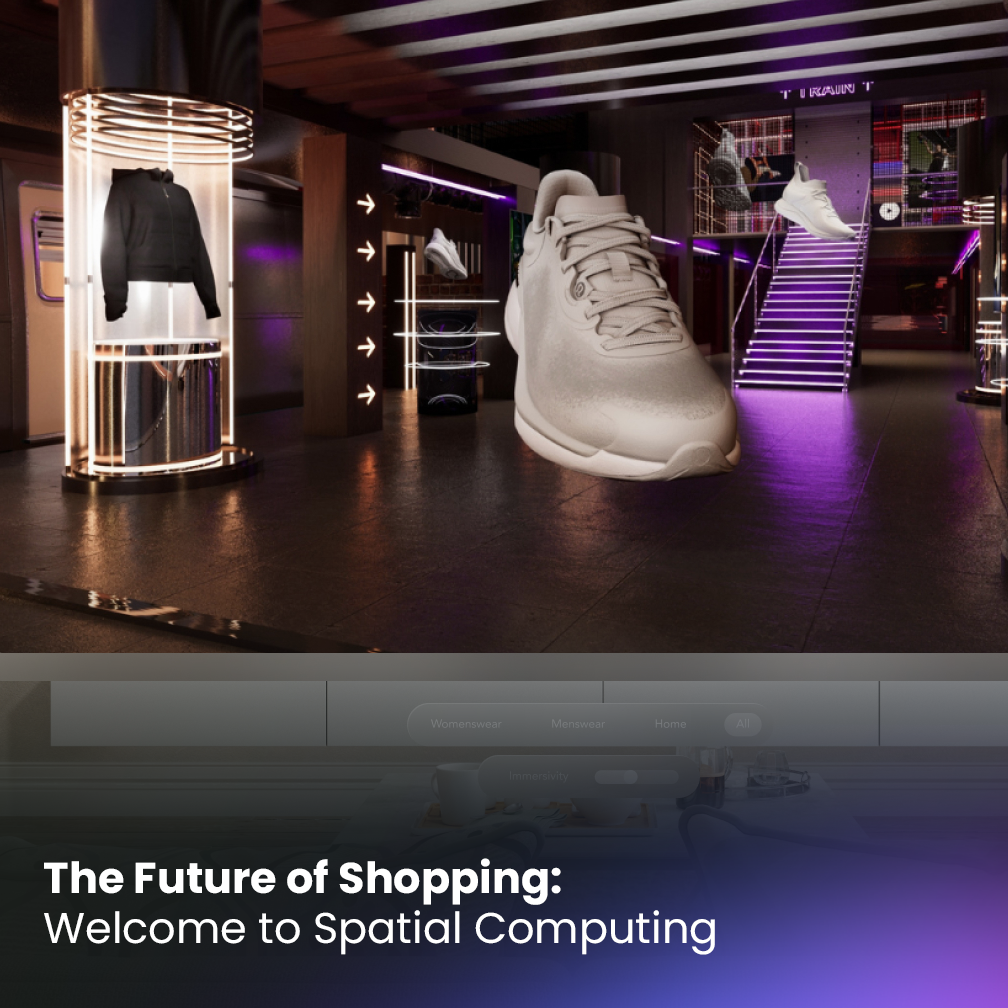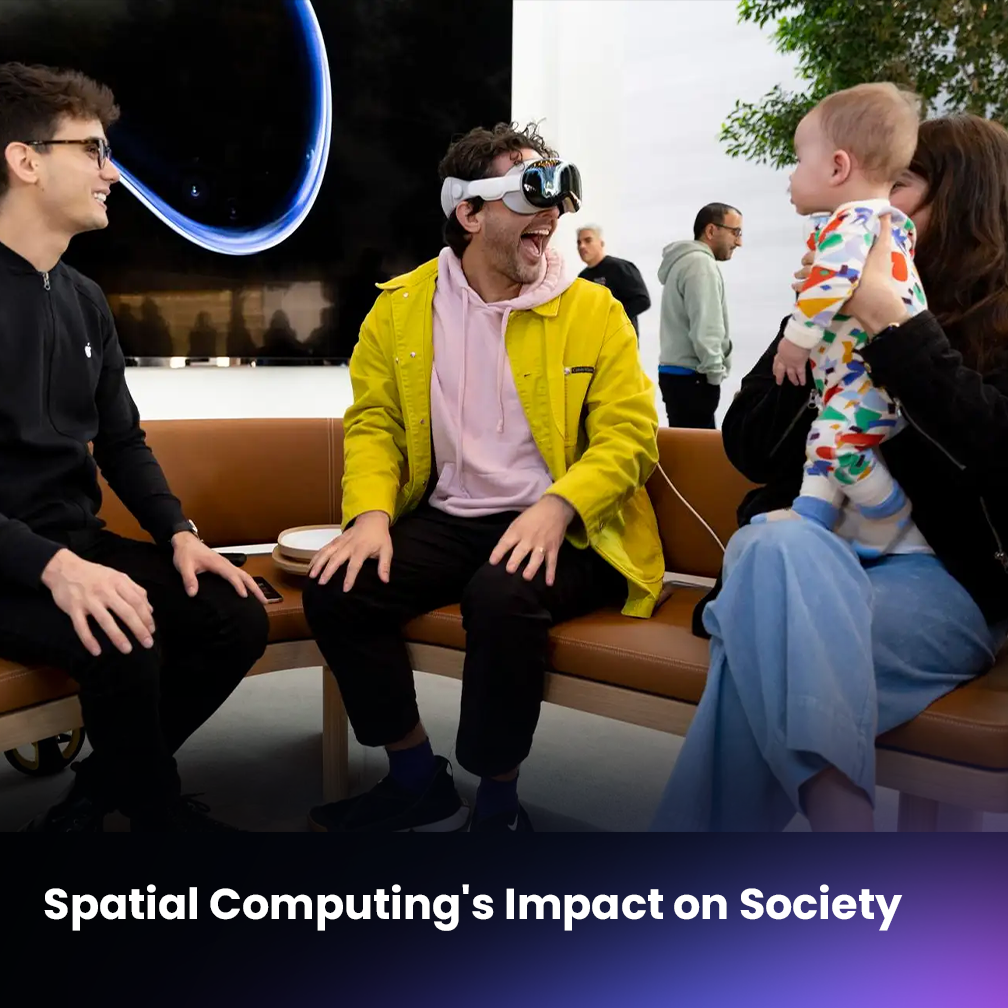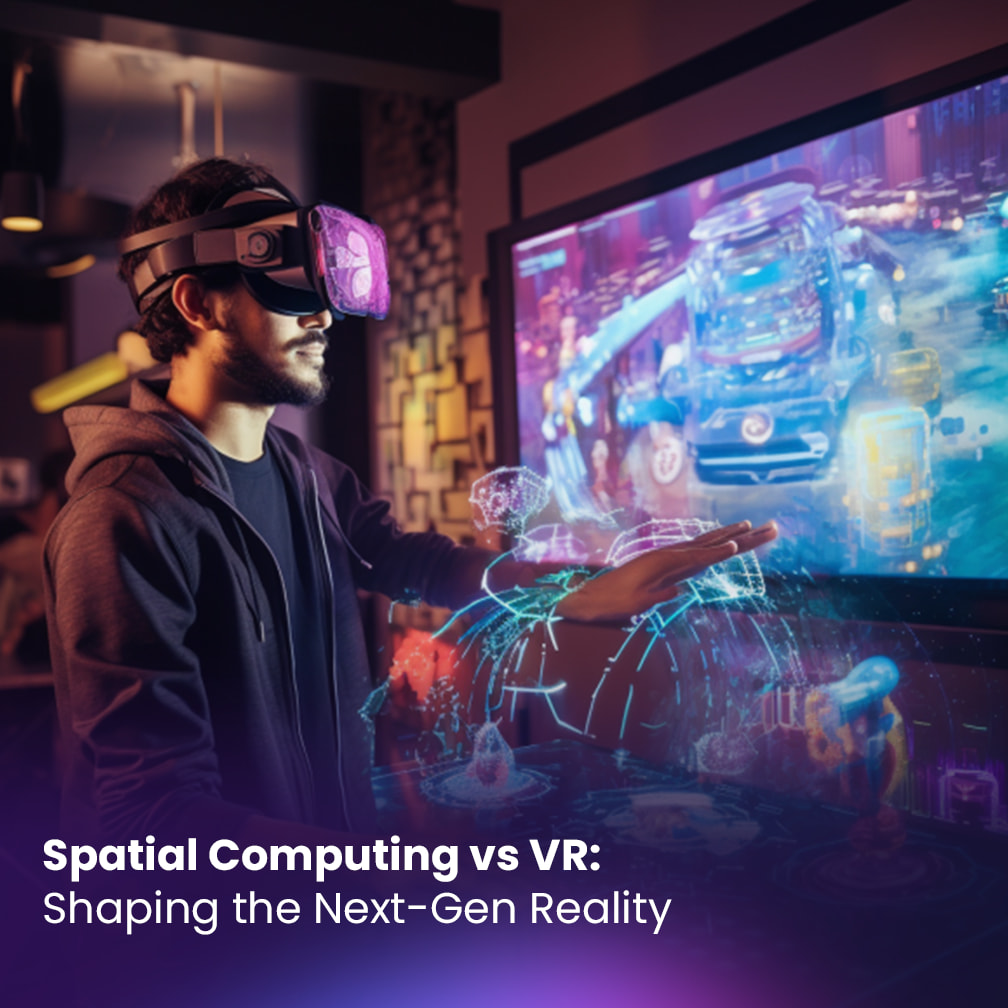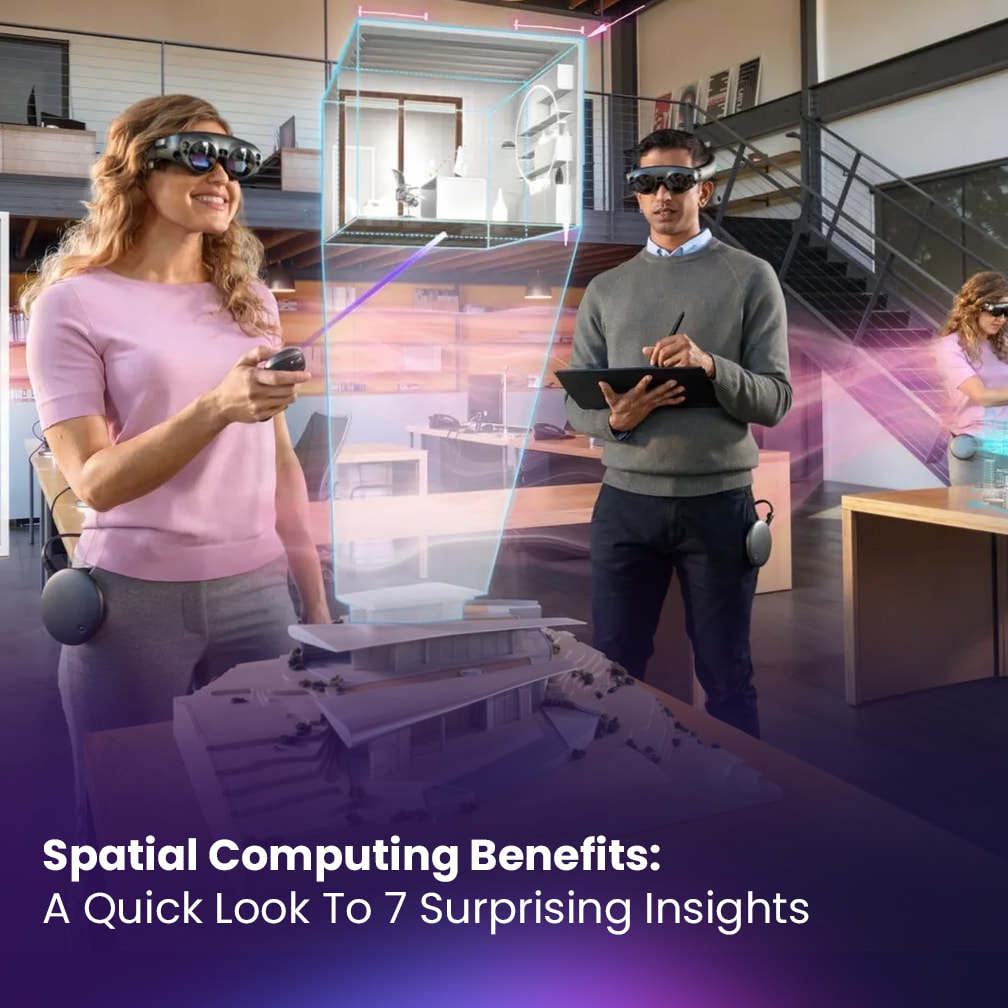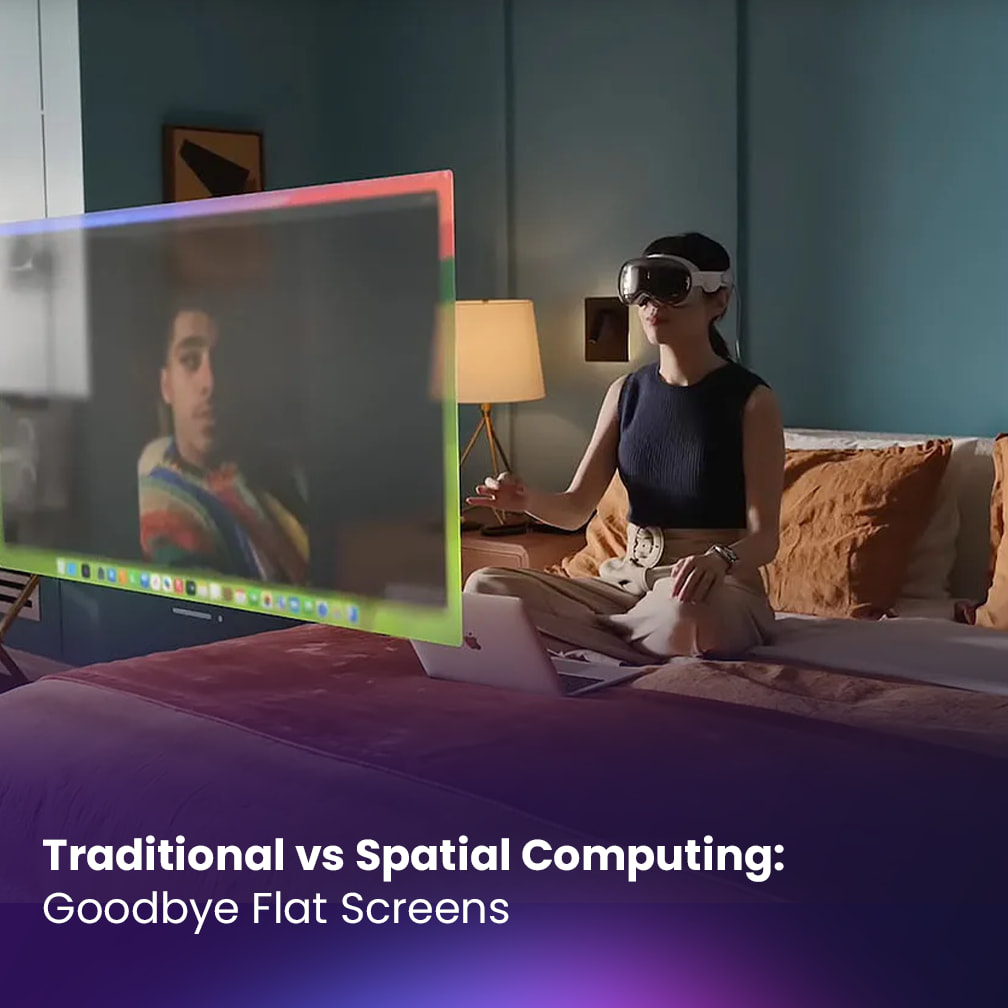The Revolution of Spatial Computing: What It Means for Businesses and Individuals Alike

Estimated reading time: 7 minutes
Spatial computing is a rapidly emerging technology that has the potential to revolutionize the way we interact with one another and with businesses, as well as shape our understanding of the digital world.
It is an interconnected virtual universe made up of multiple 3D locations, each containing its own unique characteristics and content. Spatial computing offers users a platform to collaborate and build immersive experiences, from exploring virtual worlds to conducting commerce.
Spatial computing has the potential to revolutionize how people communicate, work, shop, entertain, and even learn.
It has the power to create entirely new business models and opportunities for collaboration between businesses, organizations and individuals.
Through its unique features such as real-time presence and shared experiences, spatial computing can enable companies to gain insights into customer behaviors and preferences in a way never before possible.
Spatial computing is not just a technological platform, it also has implications for society as a whole. By providing people with unprecedented access to each other, businesses, services, and content, spatial computing could open up new pathways for economic growth, new forms of entertainment, and a more connected global community.
In addition, spatial computing could help to reduce physical barriers between people and create more opportunities for meaningful relationships.
With its potential to revolutionize how we interact with each other, buy products, and access information, spatial computing could be a powerful force for positive change.
As such, it is important for businesses to understand the impact spatial computing can have on their business operations, and to ensure that they have a strategy in place to take advantage of the opportunities it offers.
Similarly, society should be aware of the implications of this emerging technology and how it can shape our lives in the years to come.
Table of contents
What is spatial computing?
Spatial computing is a rapidly emerging technology that has the potential to revolutionize the way we interact with one another and with businesses, as well as shape our understanding of the digital world.
It is an interconnected virtual universe made up of multiple 3D locations, each containing its own unique characteristics and content. Spatial computing offers users a platform to collaborate and build immersive experiences, from exploring virtual worlds to conducting commerce.
Spatial computing can be thought of as a combination of three different technologies: virtual reality (VR), augmented reality (AR), and blockchain. For example, VR allows users to explore 3D environments with avatars, while AR enables them to view digital content in the context of the real world. And, blockchain technology can provide users with secure access to virtual resources and services.
This combination of technologies gives spatial computing users access to a variety of features, such as real-time presence, shared experiences, enhanced interactivity, and more.
With these capabilities, spatial computing users can engage in activities such as exploring 3D worlds, creating avatars, participating in virtual events, and conducting commerce.
In addition, spatial computing users can also access a variety of services such as decentralized finance (DeFi) or distributed computing.
In short, spatial computing is a powerful platform that has the potential to revolutionize how people communicate, work, and play. Its unique features offer new opportunities for businesses and individuals alike, creating spatial computing that is both immersive and collaborative.
Spatial computing has the potential to revolutionize how we interact with each other, buy products, and access information. With its potential to disrupt existing industries, create new opportunities for businesses, and foster a more connected global community, spatial computing is sure to have far-reaching implications for both businesses and society at large.
By taking advantage of its unique features, businesses can capitalize on spatial computing’s potential to stay competitive in the market and create new opportunities for growth. By understanding spatial computing’s potential, we can ensure that its revolutionary capabilities are harnessed for the benefit of all.
The Impact of Spatial Computing on Business
Spatial computing has the potential to revolutionize how businesses interact with their customers, as well as how they conduct commerce in general.
By providing a platform for real-time presence and shared experiences, spatial computing can enable companies to gain insights into customer behaviors and preferences in a way never before possible.
In addition, businesses could use spatial computing to create virtual stores, where customers can browse and purchase items without ever having to leave their homes. This could lead to increased sales and greater customer satisfaction as businesses reach more customers than ever before.
Spatial computing also has the potential to open up new markets for companies by connecting them with customers from around the world.
By providing an easy-to-use platform for sharing products and services, companies can reach new customers without having to invest in additional infrastructure or personnel. Furthermore, spatial computing could enable businesses to create immersive experiences that engage customers on an emotional level, further increasing customer loyalty and satisfaction.
Finally, spatial computing has the potential to revolutionize how businesses collaborate with each other.
By providing a platform for real-time communication, businesses can quickly collaborate on projects and exchange ideas in ways never before possible.
This could greatly increase efficiency and productivity within organizations, as well as open up new opportunities for collaboration between businesses, organizations and individuals.
Spatial computing’s implications for society
Spatial computing has significant implications for society as a whole. By creating an open platform for people to interact with each other, businesses, and services, spatial computing can enable people to connect in ways never before possible. This could lead to increased collaboration between individuals and organizations from around the world, opening up new pathways for economic growth.
In addition, Spatial computing could create more opportunities for meaningful relationships between people. By providing an open platform for presence and shared experiences, spatial computing can reduce physical barriers between people and create more opportunities for meaningful relationships.
Finally, spatial computing has potential implications for education as well. By providing an open platform where students can learn and interact with each other, spatial computing could revolutionize how knowledge is shared and acquired. This could lead to more engaging learning experiences that foster creativity and collaboration between students.
How businesses can capitalize on Spatial Computing’s potential
To capitalize on spatial computing’s potential, businesses must be willing to embrace and adapt to its technology. This can include investing in spatial computing-compatible hardware and software, as well as finding ways to leverage virtual reality and augmented reality technologies.
Additionally, businesses should look for ways to innovate within spatial computing. By finding new and creative ways to use spatial computing technology, companies can gain a competitive edge over their competitors. This could include developing virtual stores or creating immersive experiences that engage customers on an emotional level.
Finally, businesses should look for ways to collaborate with other organizations within spatial computing. By leveraging spatial computing’s potential for real-time communication, businesses can collaborate on projects and exchange ideas in ways never before possible.
Spatial computing has immense potential for businesses. By embracing spatial computing technology and innovating within it, companies can capitalize on its potential to create new opportunities for themselves as well as their customers. With the right approach, businesses can reap
Conclusion
In conclusion, spatial computing has immense potential to revolutionize how we interact with each other and conduct business. From increased economic opportunities to more meaningful relationships, spatial computing can open up new pathways for growth and development.
To capitalize on this potential, businesses must be willing to embrace spatial computing technology and find innovative ways to leverage it. With the right approach, businesses can reap huge rewards from the spatial computing’s potential. By tapping into it, organizations can create new opportunities and experiences for themselves and their customers alike.
Spatial computing is an exciting prospect that could revolutionize how we interact and conduct business in the years to come. It has the potential to open up vast new opportunities for businesses and individuals alike, and it is up to us to seize these opportunities. By taking the necessary steps, we can all benefit from spatial computing’s potential.
